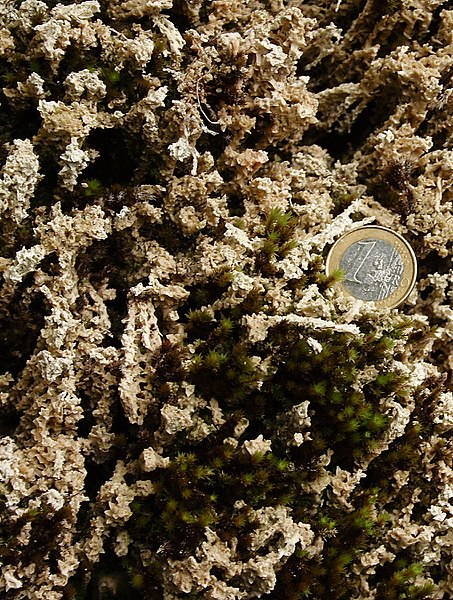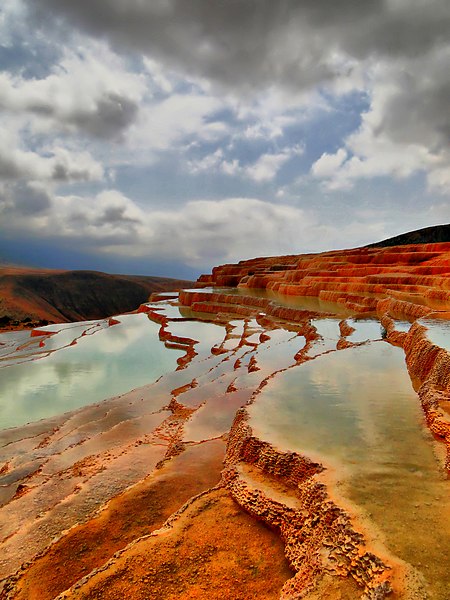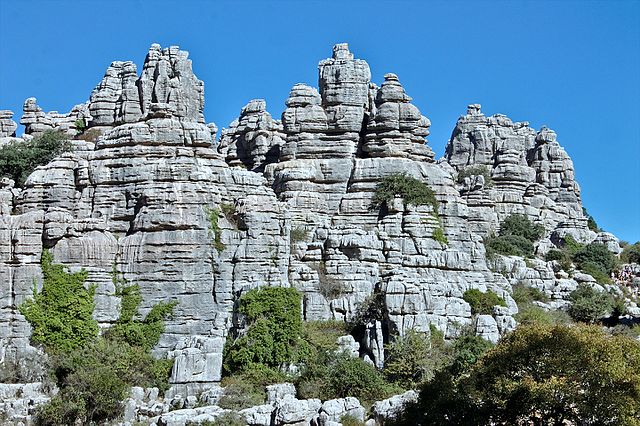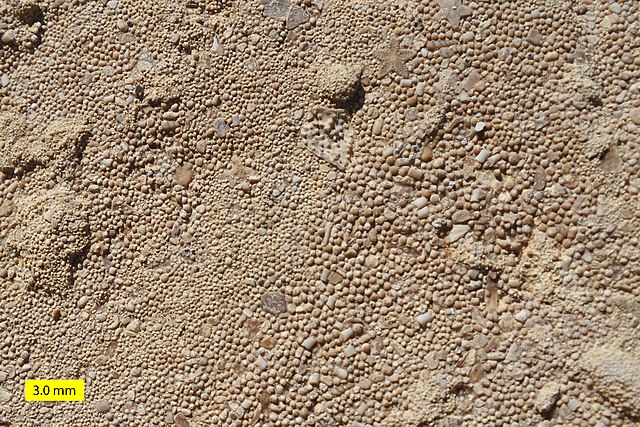Travertine is a form of terrestrial limestone deposited around mineral springs, especially hot springs. It often has a fibrous or concentric appearance and exists in white, tan, cream-colored, and rusty varieties. It is formed by a process of rapid precipitation of calcium carbonate, often at the mouth of a hot spring or in a limestone cave. In the latter, it can form stalactites, stalagmites, and other speleothems. It is frequently used in Italy and elsewhere as a building material. Similar deposits formed from ambient-temperature water are known as tufa.
Travertine terraces at Mammoth Hot Springs, Yellowstone National Park, in 2016
Calcium-carbonate-encrusted, growing moss in a low-temperature freshwater travertine formation (1 euro coin for scale)
Badab-e Surt's stepped travertine terrace formations. This travertine owes its red colour terraces to iron carbonate.
Mausoleum submerged in a travertine pool at Hierapolis hot springs, Turkey
Limestone is a type of carbonate sedimentary rock which is the main source of the material lime. It is composed mostly of the minerals calcite and aragonite, which are different crystal forms of CaCO3. Limestone forms when these minerals precipitate out of water containing dissolved calcium. This can take place through both biological and nonbiological processes, though biological processes, such as the accumulation of corals and shells in the sea, have likely been more important for the last 540 million years. Limestone often contains fossils which provide scientists with information on ancient environments and on the evolution of life.
Limestone outcrop in the Torcal de Antequera nature reserve of Málaga, Spain
This limestone deposit in the karst of Dinaric Alps near Sinj, Croatia, was formed in the Eocene.
Ooids from a beach on Joulter's Cay, The Bahamas
Ooids in limestone of the Carmel Formation (Middle Jurassic) of southwestern Utah.








